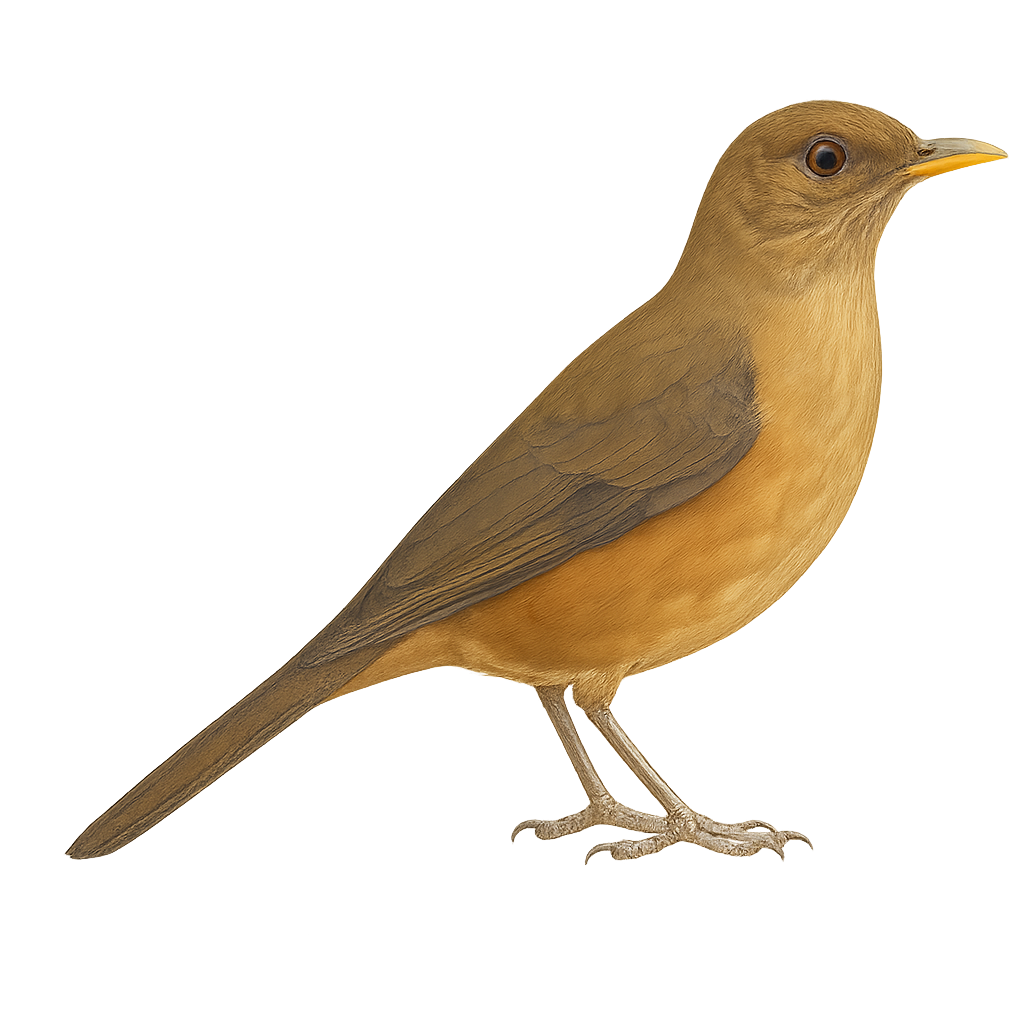Your wildlife photography guide.
Explore the clay-colored thrush in detail, study its behavior, prepare your shots.
Where to observe and photograph the clay-colored thrush in the wild
Learn where and when to spot the clay-colored thrush in the wild, how to identify the species based on distinctive features, and what natural environments it inhabits. The WildlifePhotographer app offers tailored photography tips that reflect the clay-colored thrush’s behavior, helping you capture better wildlife images. Explore the full species profile for key information including description, habitat, active periods, and approach techniques.
Clay-colored Thrush
Scientific name: Turdus grayi

IUCN Status: Least Concern
Family: TURDIDAE
Group: Birds
Sensitivity to human approach: Suspicious
Minimum approach distance: 5 m
Courtship display: March to June
Incubation: 12-14 jours
Hatchings: March to July
Habitat:
gardens, parks, secondary forests
Activity period :
Primarily active during the day, with peak activity in the morning and late afternoon.
Identification and description:
The Clay-colored Thrush, or Turdus grayi, is a medium-sized bird, measuring about 23 to 27 cm in length. Its plumage is primarily light brown, allowing it to blend into its natural surroundings. Known for its melodious song, it is often heard at dawn and dusk. This bird is widely distributed in Central America, from southern Mexico to northern Colombia. It prefers open habitats such as gardens, parks, and secondary forests. The Clay-colored Thrush is an omnivorous bird, feeding on fruits, insects, and small invertebrates. It is often seen foraging on the ground in search of food.
Recommended lens:
400mm – adjust based on distance, desired framing (portrait or habitat), and approach conditions.
Photography tips:
To photograph the Clay-colored Thrush, it is advisable to use a 400mm lens or longer to capture precise details without disturbing the bird. Look for areas where the bird is active, such as gardens or parks, and be patient. Morning or evening are the best times to capture its melodious song. Use a tripod to stabilize your camera and adjust your camera settings for low light conditions.
The WildlifePhotographer App is coming soon!
Be the first to explore the best nature spots, track rutting seasons, log your observations, and observe more wildlife.
Already 1 439 wildlife lovers subscribed worldwide

